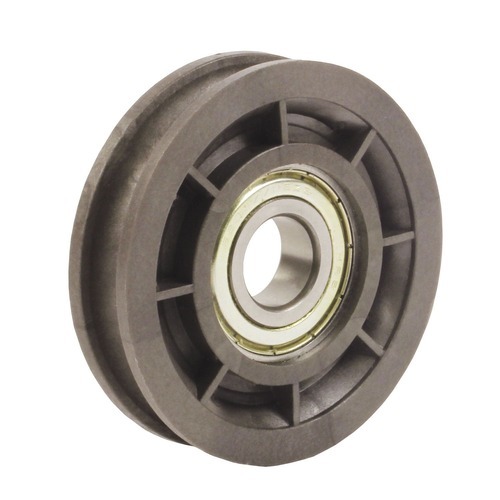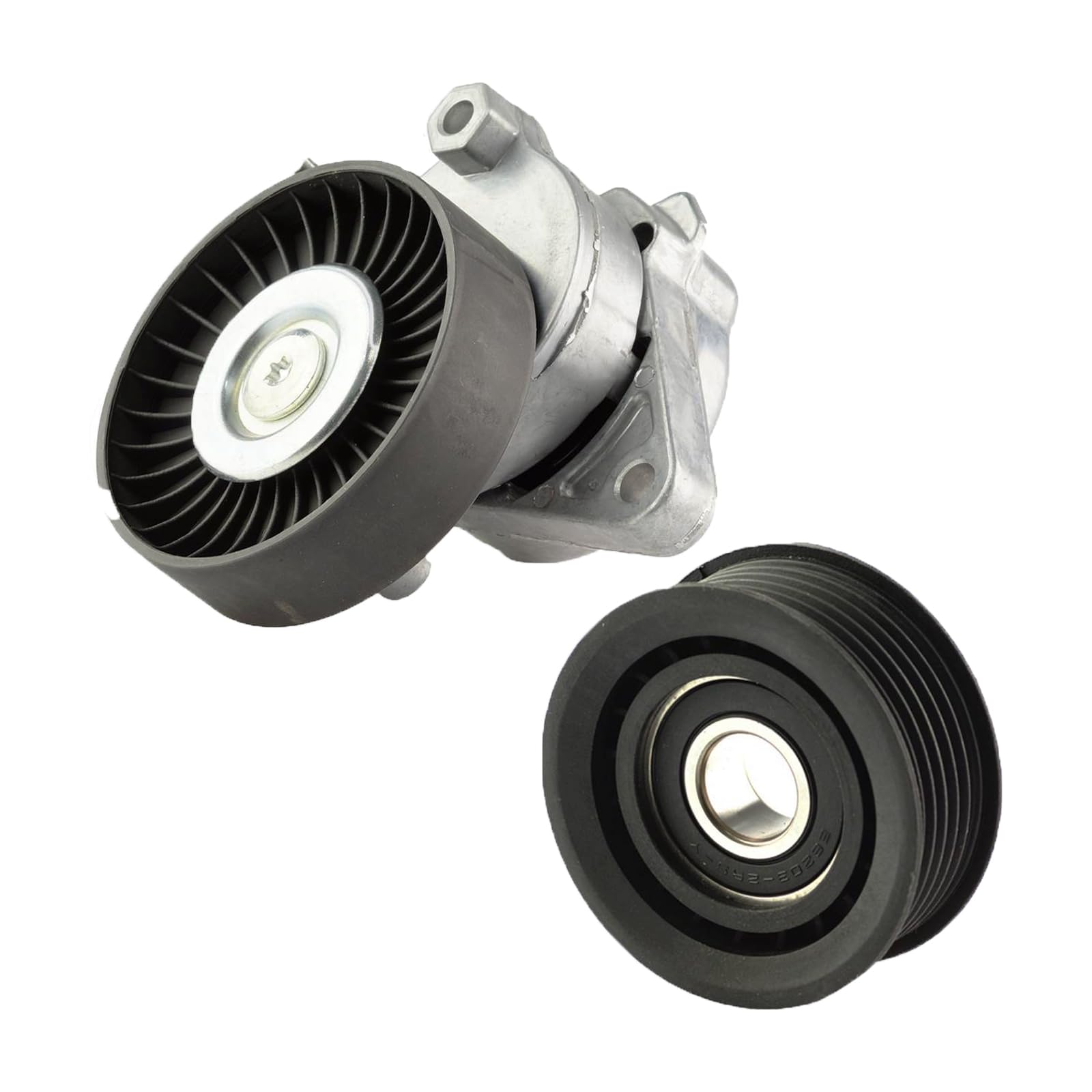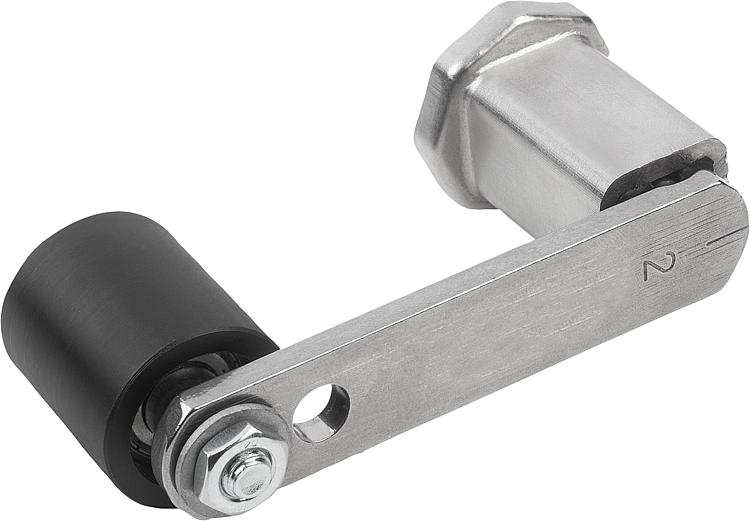Product Description
Belt Conveyor Tension Roller Tail Drum Pulley with Ceramic Lagging
Product Application
CHINAMFG conveyor pully is manufactured as per customer requirement, with main design unfer national standard, quality inspection focusing on shaft core, welded joint, rubber material and hardness, dynamic balance and so on for longer product lifetime.
Our products are widely used in thermal power generation, harbours, cement plants, metallurgy and as well as the light duty conveying devices for industries.
|
SPECIFICATIONS |
|||
|
Product name |
belt conveyor pulley drum |
||
|
Type |
Transmission drum, Redirection drum, Driving Electric drum |
||
|
Length |
200mm-1800mm |
||
|
Materials |
Carbon steel, Stainless steel, Rubber |
||
|
Surface treatment |
Smooth, CHINAMFG grooved lagging, Herringbone lagging, Ceramic lagging |
||
|
Welding |
Submerged arc welding |
||
|
Bearing |
SKF, CHINAMFG and other brands at home and abroad |
||
|
Structure |
Tube,shaft,self-aligning bearing,bearing seat/house,hub, locking bushing,end disc |
||
About roller,we can make gravity conveyor roller,steel conveyor roller,driving roller,light middle duty conveyor roller,o-belt tapered sleeve roller,gravity tapered roller,polymer sprocket roller and so on. More details, please contact us.
Main Feature
1) CHINAMFG design, suitable for heavy lifting.
2) The bearing housing and steel tube are assembled and welded with a concentric automatic.
3) Cutting of the steel tube and bearing is performed with the use of a digital auto device/machine/equipment..
4) The bearing end is constructed to ensure that the roller shaft and bearing can be firmly connected.
5) Fabrication of the roller is effected by an auto device and 100% tested for its concentricity.
6) Roller and supporting components/materials are manufactured to DIN/ AFNOR/ FEM/ ASTM/ CEMA standard.
7) The casing is manufactured with highly composite, anti corrosive alloy.
8) The roller is lubricated and free from maintenance.
9) Woring life expectancy is up to 30,000 hours or more, depending on usage.
10)Vacuum sealed which has withstood anti water, salt, snuff, sandstone and dust proof experiments
Related Products
/* March 10, 2571 17:59:20 */!function(){function s(e,r){var a,o={};try{e&&e.split(“,”).forEach(function(e,t){e&&(a=e.match(/(.*?):(.*)$/))&&1
| Material: | Stainless Steel |
|---|---|
| Surface Treatment: | Ceramic Coated |
| Motor Type: | Frequency Control Motor |
| Installation: | Horizontal |
| Color: | Customized |
| Transport Package: | Wooden Pallet |
| Samples: |
US$ 500/Piece
1 Piece(Min.Order) | |
|---|
| Customization: |
Available
| Customized Request |
|---|

How does the size and design of a tension pulley impact its performance?
The size and design of a tension pulley have a significant impact on its performance in various applications. Here’s a detailed explanation of how the size and design of a tension pulley influence its performance:
1. Size: The size of a tension pulley affects its mechanical advantage and the amount of contact area with the belt. A larger pulley diameter increases the effective radius around which the belt wraps, resulting in increased belt contact. This larger contact area enhances the grip between the belt and pulley, improving power transfer and reducing the likelihood of slippage. A larger tension pulley also allows for a more gradual bend radius, reducing stress concentrations on the belt and extending its lifespan.
2. Design: The design of a tension pulley encompasses various factors, including the shape, profile, and materials used. The design influences the pulley’s ability to guide the belt, distribute tension, and minimize wear. Here are some specific design considerations and their impact on performance:
a. Pulley Profile: The profile of a tension pulley refers to its shape and contour. Common profiles include flat, crowned, and v-shaped. A crowned pulley has a slightly curved surface, which helps center the belt and maintain proper tracking. This design reduces the risk of belt misalignment and enhances the pulley’s self-cleaning ability. V-shaped pulleys are often used with V-belts for increased grip and improved power transmission. The choice of pulley profile depends on the specific application and the type of belt being used.
b. Pulley Surface: The surface texture and finish of a tension pulley impact its frictional characteristics and interaction with the belt. A smooth and polished surface reduces friction, minimizing belt wear and heat generation. However, in certain applications where additional traction is required, such as in high-torque situations, pulleys with textured or coated surfaces may be used to increase grip and prevent slippage.
c. Pulley Material: The material used in the construction of a tension pulley affects its durability, wear resistance, and overall performance. Common materials include steel, cast iron, aluminum, and various engineering plastics. Steel and cast iron pulleys are known for their strength and durability, making them suitable for heavy-duty applications. Aluminum pulleys are lighter and corrosion-resistant, making them ideal for certain environments. Engineering plastics, such as nylon or polyurethane, offer advantages like reduced noise, improved friction, and resistance to chemicals or abrasion.
d. Pulley Bearings: The design and quality of the bearings used in the tension pulley impact its smoothness of rotation and overall performance. High-quality bearings with low friction enable efficient power transmission and reduce wear on the pulley and belt. Properly lubricated and sealed bearings also contribute to the longevity and reliability of the tension pulley.
e. Pulley Configuration: The configuration of tension pulleys in a system, such as the number of pulleys and their arrangement, can impact performance. Multiple tension pulleys can distribute the load more evenly across the belt, reducing localized stress and improving overall system efficiency. The proper positioning and alignment of tension pulleys also play a crucial role in maintaining belt tension, tracking, and minimizing wear.
In summary, the size and design of a tension pulley significantly affect its performance. The size determines the contact area with the belt and the mechanical advantage, influencing grip, power transfer, and belt lifespan. The design considerations, including pulley profile, surface texture, material selection, bearing quality, and configuration, impact belt tracking, tension distribution, wear resistance, and overall system efficiency. Choosing the appropriate size and design based on the specific application requirements is essential for maximizing the performance and longevity of tension pulleys.

How do tension pulleys contribute to the functioning of garage door systems?
Tension pulleys play a vital role in the functioning of garage door systems. They are integral components that help support and guide the movement of the garage door, ensuring smooth operation, proper tensioning of the lifting cables, and efficient transfer of force. Here’s a detailed explanation of how tension pulleys contribute to the functioning of garage door systems:
1. Lifting Mechanism: Garage doors typically operate using a lifting mechanism that involves torsion springs or extension springs, along with lifting cables. Tension pulleys are used to guide and route the lifting cables, which are attached to the bottom of the garage door and connected to the spring system. As the springs are tensioned or extended, the tension pulleys ensure that the lifting cables move smoothly along the pulley tracks, facilitating the upward or downward movement of the garage door.
2. Tensioning of Lifting Cables: Tension pulleys in garage door systems help maintain the proper tension in the lifting cables. The cables need to be appropriately tensioned to support the weight of the garage door and ensure balanced and controlled movement. Tension pulleys provide a point of contact for the lifting cables, allowing them to wrap around the pulleys and adjust their tension as the door opens or closes. This proper tensioning prevents cable slack, maintains stability, and ensures safe and reliable operation of the garage door.
3. Smooth and Balanced Operation: Tension pulleys contribute to the smooth and balanced operation of garage door systems. As the lifting cables move along the tension pulleys, they help distribute the force evenly, preventing excessive strain on specific components. This balanced force distribution minimizes the risk of cable or pulley damage and ensures that the garage door moves up and down smoothly without any jerking or binding. The smooth operation facilitated by tension pulleys enhances user convenience and prolongs the lifespan of the garage door system.
4. Noise Reduction: Tension pulleys also play a role in reducing noise during the operation of garage door systems. By guiding the lifting cables and providing smooth movement, they help minimize friction and vibrations that can contribute to noise generation. The proper tensioning and alignment of the cables achieved through tension pulleys contribute to quieter operation, reducing disturbances for occupants and neighbors when the garage door is opened or closed.
5. Component Protection: Tension pulleys help protect various components of the garage door system. By maintaining proper tension in the lifting cables, they prevent excessive stress or strain on other components such as the springs, tracks, and door panels. This protection extends the lifespan of these components, reducing the likelihood of premature wear, damage, or costly repairs. Tension pulleys also contribute to the overall safety and reliability of the garage door system, minimizing the risk of accidents or malfunctions.
It is important to note that tension pulleys in garage door systems should be regularly inspected and maintained to ensure their proper functioning. Lubrication and periodic adjustments may be necessary to optimize their performance and extend their lifespan.
In summary, tension pulleys are essential components in garage door systems. They facilitate the movement of lifting cables, maintain proper tension, support balanced operation, reduce noise, and protect various components. By incorporating tension pulleys, garage door systems operate smoothly, safely, and reliably, providing convenience and security for homeowners.

Can you explain the key components and design features of a tension pulley?
A tension pulley, also known as an idler pulley or a belt tensioner, is a mechanical component used to maintain proper tension in belts or chains within a system. It consists of several key components and design features that enable its functionality. Here’s a detailed explanation of the key components and design features of a tension pulley:
1. Pulley Wheel: The pulley wheel is the main component of a tension pulley. It is a grooved wheel or sheave that guides the belt or chain and provides a contact surface for it to run on. The pulley wheel is typically made of durable materials such as steel or aluminum to withstand the forces and wear associated with tensioning and power transmission. The groove on the wheel is designed to match the profile of the belt or chain, ensuring proper engagement and minimizing slippage.
2. Shaft: The pulley wheel is mounted on a shaft, which allows it to rotate freely. The shaft is usually made of metal and is supported by bearings or bushings to reduce friction and enable smooth rotation. The shaft is connected to the pulley wheel either through a press fit, a keyway, or other secure means to ensure a reliable connection and transfer of rotational motion.
3. Tension Adjustment Mechanism: Tension pulleys feature a tension adjustment mechanism that allows for the control of belt or chain tension. The mechanism can vary depending on the design of the tension pulley. It may include components such as a bolt or screw, a spring-loaded arm, or a hydraulic or pneumatic actuator. These mechanisms enable the adjustment of the position or force applied by the tension pulley, allowing for precise tension control and maintenance.
4. Mounting Bracket or Arm: Tension pulleys are typically attached to a mounting bracket or arm, which provides support and allows for proper positioning within the system. The bracket or arm is often made of metal and may be adjustable to accommodate different belt or chain sizes or to facilitate tension adjustments. It is securely fastened to the system’s framework or structure to ensure stability and reliable operation.
5. Tensioner Spring: In some tension pulleys, particularly those with automatic tensioning mechanisms, a tensioner spring is used to provide the necessary force to maintain tension. The spring is typically coiled and mounted in a way that allows it to apply a constant force to the tension pulley. As the belt or chain stretches or wears, the tensioner spring compensates by exerting a force that keeps the tension within the desired range. This ensures consistent tension and reduces the need for manual adjustments.
6. Protective Covers or Shields: Depending on the application and environment, tension pulleys may feature protective covers or shields. These components help to protect the pulley wheel, shaft, bearings, and other internal parts from contaminants, debris, and potential damage. Protective covers or shields are commonly made of durable materials such as plastic or metal and are designed to be easily removable for maintenance and inspection purposes.
7. Additional Features: Some tension pulleys may include additional features to enhance their functionality or adapt to specific system requirements. These features can include belt or chain guides to ensure proper alignment, integrated bearings for smooth operation, belt or chain tension indicators for visual monitoring, or even specialized coatings or treatments to enhance durability and reduce friction.
In summary, a tension pulley is composed of key components such as the pulley wheel, shaft, tension adjustment mechanism, mounting bracket or arm, tensioner spring (in some cases), protective covers or shields, and additional features as required. The design features of a tension pulley are carefully engineered to provide reliable tension control, proper engagement with belts or chains, and longevity in various mechanical systems.


editor by CX
2024-02-03